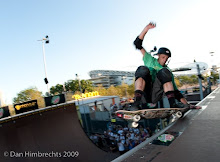 On Power Systems are the use of an electronic component which is generally used in a series of electric motors settings. Electronic components used in electrical power systems, in principle, be capable of producing large power or be able to withstand large power dissipation.
On Power Systems are the use of an electronic component which is generally used in a series of electric motors settings. Electronic components used in electrical power systems, in principle, be capable of producing large power or be able to withstand large power dissipation.Includes switching power electronics, control and modifier (conversion) large blocks of electric power by means of semiconductor devices. Thus the power electronics broadly divided into 2 (two) parts:
A. Power circuit2. The control circuit
In the following figure shows the relationship between the two sets above are integrated into one, where they are making use of semiconductor devices.

Power circuit components consist of diodes, thyristors and power transistors. While the control circuit consisting of diodes, transistors and integrated circuits (Integrated Circuit / IC).
By using similar equipment reliability and compatibility of the equipment (system) will be repaired. Power electronics is an important part of industries, namely in the power control systems, processes and other electronics.
I. DIODE
Diode is a union of P and N layers as images and symbols layer structure.

Terms of diodes in the ON state is positive Vak Vak while OFF is negative.
These characteristics describe the relationship between current diode (IR and IF) to Vak in the current conditions hold (OFF) or in a state of flow (ON). In the OFF state, Vak = Vr = negative, the diode current holding but there is a small leakage current Ir.
In the ON state, Vak = Vf = positive, but there is a current of the diode voltage drop across the diode Vf = Δ, and if Δ Vf is the greater for the higher diode currents, meaning * If the conduction loss Δ Vf up. Seen also on the characteristics of the diode above that when Vr is too high diode will be damaged.

Switching characteristics
These characteristics describe the nature of the work shift diodes in the ON state to OFF and vice versa.
Diode current will soon pass if Vr has reached more than the minimum diode Vf conducive and OFF at a delay of having to re-diode reverse voltage blocking capability. From the picture above tgerlihat of instantaneous reverse flow in the diode, where the reverse flow occurs at the transition state of the diode from ON state to the reverse voltage blocking conditions.
Given the nature of the reverse flow, the obtained two types of classification of the diode is:A. Fast diodes, ie diodes with Traffic immediately capable of blockingrapid reverse voltage, the order of 200 ns starting from the diode forward currentequal to 0 (zero).
2. Slow diodes, ie for the same diode requires a longer time,Q32> Qs1.
Terminology diode characteristics
Trr Reverse Recovery Time, the time it takes to be blocking diode forward voltage.Tjr: The time required by a PN junction to be blocked.TBR: The time required to form a border zone blocking Junction.Qs: The amount of charge that flows in the reverse direction during the movement of the diode ON to OFF status.
Diode type is used on a much slower converters with commutation slow / natural, such as the rectifier circuit. While Fast Diode type static converter used in the commutation itself, such as the DC Chopper, the converter commutation own dll.
The voltage capability
Reverse voltage blocking diode is, was able to withstand voltage depends on the characteristics of the voltage itself.
VRWM = normal peak working voltage.VRRM = peak overvoltage that occurs periodically.VRSM = Peak voltage is not periodic.
Diode current capability
The existence of Δ conduction voltage drop Vf diode causes power loss at the exit in the form of heat. The maximum junction temperature lies between 110 ° C - 125 ° C. Heat in excess of this temperature will cause diode damage. This maximum temperature can be achieved by a variety of load currents of the diodes.
If (AV): The current average of the maximum allowable each average current price would result in a price of final temperature on the junction diode. If the limit (AV) is also dependent on ambient temperature and type of cooling system (heat-sink).
If (RMS): maximum diode current effective price. Average price is below If (ΔV) maximum, not to guarantee the security operation, especially diode load current diode with a high form factor. (Rate Mean Square)
If (RM): peak flow over periodic price allowed.
If (BC): The price of non periodic peak flows over the allowable
Q: Boundary integral diode current loading which is still able to experience it.
This scale applies to ½ cycles or 1 ms and a guide in the selection of surge protector.
Examples of data Fast Diode Type MF 70Maximum repetitive peak reverse voltage, Vdrm = 1200 Volt.Mean forward current, If (AV) = 70 ARMS forward current, IRMS max = 110 ANon repetitive forward current, If (ms) = 700 AForward V-Drop, VFM = V, the IFM = 210 APeak reverse current, IRM = 5 mAReverse recovery time, trr = 200 nsStored, charger, Qrr = T μc (Qs)Thermal resistance, Rth-jc = 0.37 ° C / w
At follow-up article will discuss: SCR (Silicon Controlled Rectifier), TRIAC (triode Alternating Current Switch), DIAC (Bilateral Trigger Diodes) and UJT (Uni-Transistor Juntion).
May be useful,

0 comments:
Post a Comment